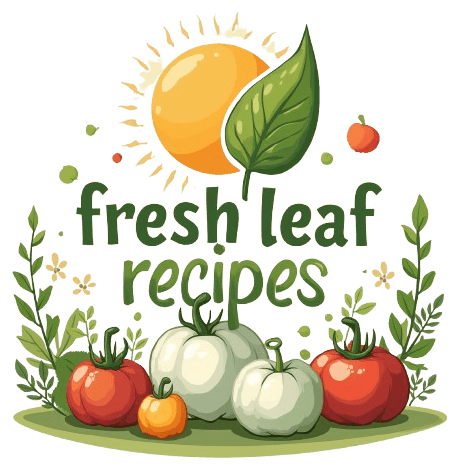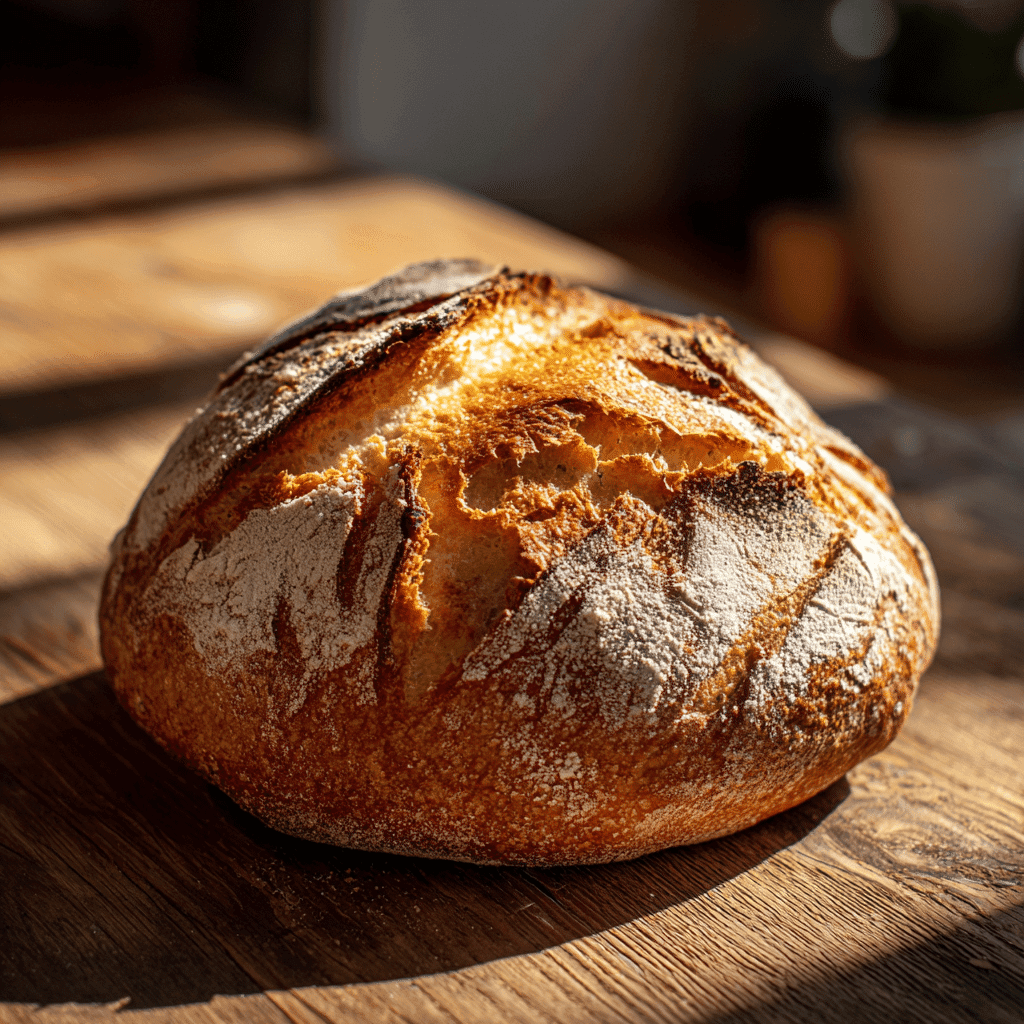Levain bread gluten free is more than just a trend—it’s a delicious solution for anyone who misses the rustic charm of sourdough but can’t tolerate wheat. In this guide, we’ll explore how to create gluten-free levain bread at home, from starter to crust. You’ll learn what ingredients make it work, how it differs from regular gluten-free loaves, and why slow fermentation benefits your digestion. Whether you’re new to gluten-free baking or simply looking for better flavor and texture, this article offers clear tips, trustworthy recipes, and helpful answers to common gluten-related baking questions—all with zero fluff.
Table of Contents
1: The Story & What Makes Levain Bread Special
Why I Started Making Gluten-Free Levain Bread
My love for baking started years ago in a tiny Paris kitchen, but it wasn’t until I had to eliminate gluten that I truly discovered the magic of levain bread gluten free. I missed the chewy crust and airy crumb of traditional sourdough. Most gluten-free breads I tried were overly dense or dry. That’s when I decided to recreate that rustic experience—with a twist.
Making gluten free levain bread felt like the perfect challenge. Instead of commercial yeast, levain relies on wild fermentation from a natural starter. By using gluten-free flours like sorghum, millet, or brown rice, I was able to replicate the complex flavor and rise without gluten. The result? A loaf with real depth, better digestibility, and no compromise on texture.
For anyone following a gluten-free meal plan, this type of bread fits perfectly. It’s also ideal for anyone looking to reduce processed ingredients in their diet while still enjoying real artisan bread.
Understanding Levain: What It’s Made Of
So, what is levain bread made of? Traditionally, it’s a mix of flour, water, salt, and a starter. In gluten free levain bread, the same principles apply—only the flours change. Instead of wheat, we use naturally gluten-free grains like teff, rice, or buckwheat. The starter is fed daily and becomes active after several days of fermentation.
It’s important to ensure all ingredients are certified gluten free, including the flour and water source. If you’re not sure where to begin, our gluten-free sourdough bread guide walks you through each step with simple instructions.
Once you taste a slice of this hearty, homemade levain bread gluten free, you’ll understand why so many are turning back to the roots of bread baking—with a modern, allergy-friendly twist.
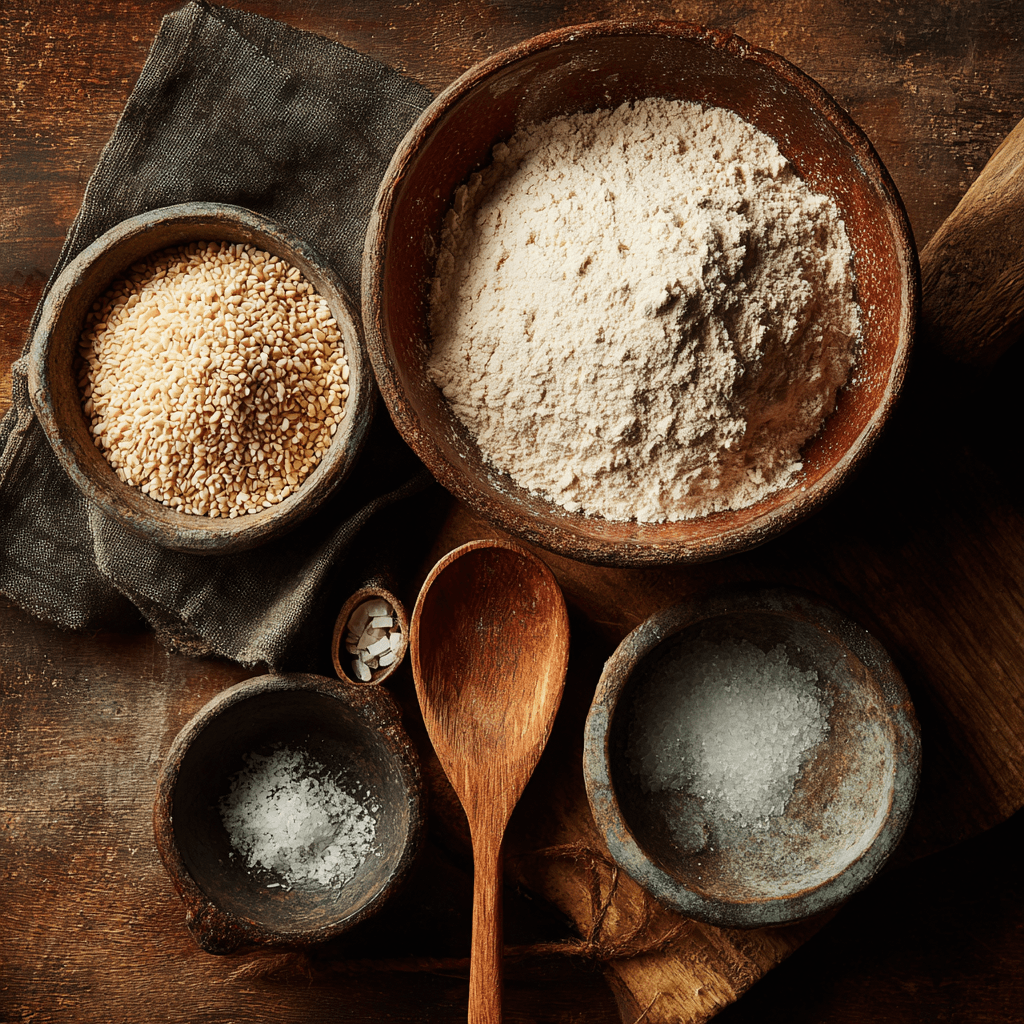
2: How to Make Levain Bread Gluten Free at Home
The Art of Making Gluten Free Levain Bread
Creating levain bread gluten free at home isn’t hard—it just requires patience and the right tools. The most important element is a strong gluten-free sourdough starter. You can make one with equal parts gluten-free flour (like brown rice or sorghum) and filtered water, feeding it daily for 5–7 days. Look for bubbles and a tangy smell—that’s when you know it’s alive.
When mixing the dough, combine your starter with a blend of gluten-free flours. I like a mix of millet flour, tapioca starch, and sorghum for the perfect crumb. Hydration is key: gluten-free flours absorb more water, so your dough will look wetter than wheat-based doughs. Don’t panic—it’s normal.
You’ll also need to let the dough rise longer than usual, sometimes up to 12 hours, to allow the wild yeast to work its magic. And instead of kneading, a few stretch-and-fold movements during bulk fermentation will help structure the loaf.
One of the best parts about baking levain bread gluten free is knowing exactly what’s in it. No gums, fillers, or additives—just flour, water, salt, and time. Check out our easy gluten-free chicken nuggets to round out a rustic dinner that’s entirely gluten free.
The Best Breads for Gluten Intolerance
If you’re dealing with gluten intolerance or celiac disease, your best bet is homemade or certified gluten-free sourdough. Unlike many store-bought options, gluten free levain bread uses traditional methods to break down compounds that may irritate sensitive guts. Its slow fermentation makes it easier to digest and more flavorful than many other alternatives.
Want more guidance? Our California Pizza Kitchen gluten-free review breaks down safe dining-out tips, while this article shows you how to bring artisan gluten-free bread to your kitchen—flavor, crust, and all.
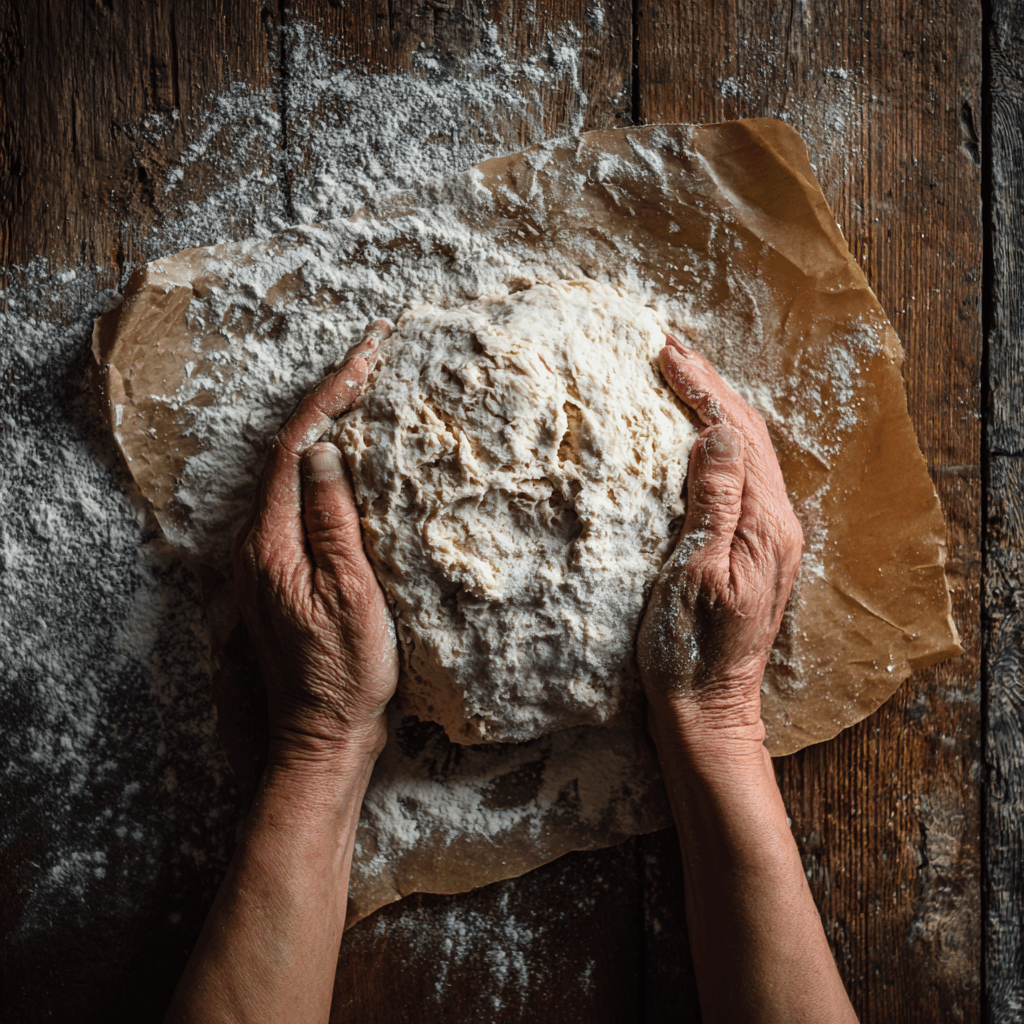
3: Gluten-Free Starters & Celiac-Friendly Baking
Is Sourdough Starter Gluten Free?
This is one of the most common questions I get—and the answer is both yes and no, depending on how it’s made. A traditional sourdough starter is made from wheat flour, which is not safe for anyone with gluten intolerance. However, a gluten free sourdough starter is absolutely possible—and essential for making levain bread gluten free.
To make it, you’ll mix equal parts of gluten-free flour and filtered water, feeding it daily. Brown rice flour, sorghum, or buckwheat are great choices because they ferment well and create a bubbly, active culture. In about a week, you’ll have a fully active, gluten-free starter ready for baking.
It’s important to maintain your starter in a clean jar and avoid any cross-contamination with gluten products. Label it, store it separately, and always use clean utensils. For more troubleshooting and starter care, visit our guide to gluten-free sourdough, which includes visual cues for fermentation success.
Can Celiacs Eat Gluten-Free Levain and Cookies?
Yes, celiacs can eat gluten-free levain bread and gluten-free cookies—as long as every ingredient is certified gluten-free and no cross-contamination occurs. For many with celiac disease, the issue isn’t just avoiding wheat—it’s ensuring the entire kitchen setup is safe.
When baking gluten-free, stick to dedicated bowls, utensils, and storage areas. Read every label. Even trace gluten can trigger a response in sensitive individuals. The good news? With homemade levain bread gluten free, you control every ingredient.
For sweets, explore our curated list of gluten-free dessert recipes. And if cookies are your thing, we’ve tested several flour blends to create crispy, chewy bites that celiacs can enjoy without worry.
4: Leavening Agents & Tips for Better Gluten-Free Baking
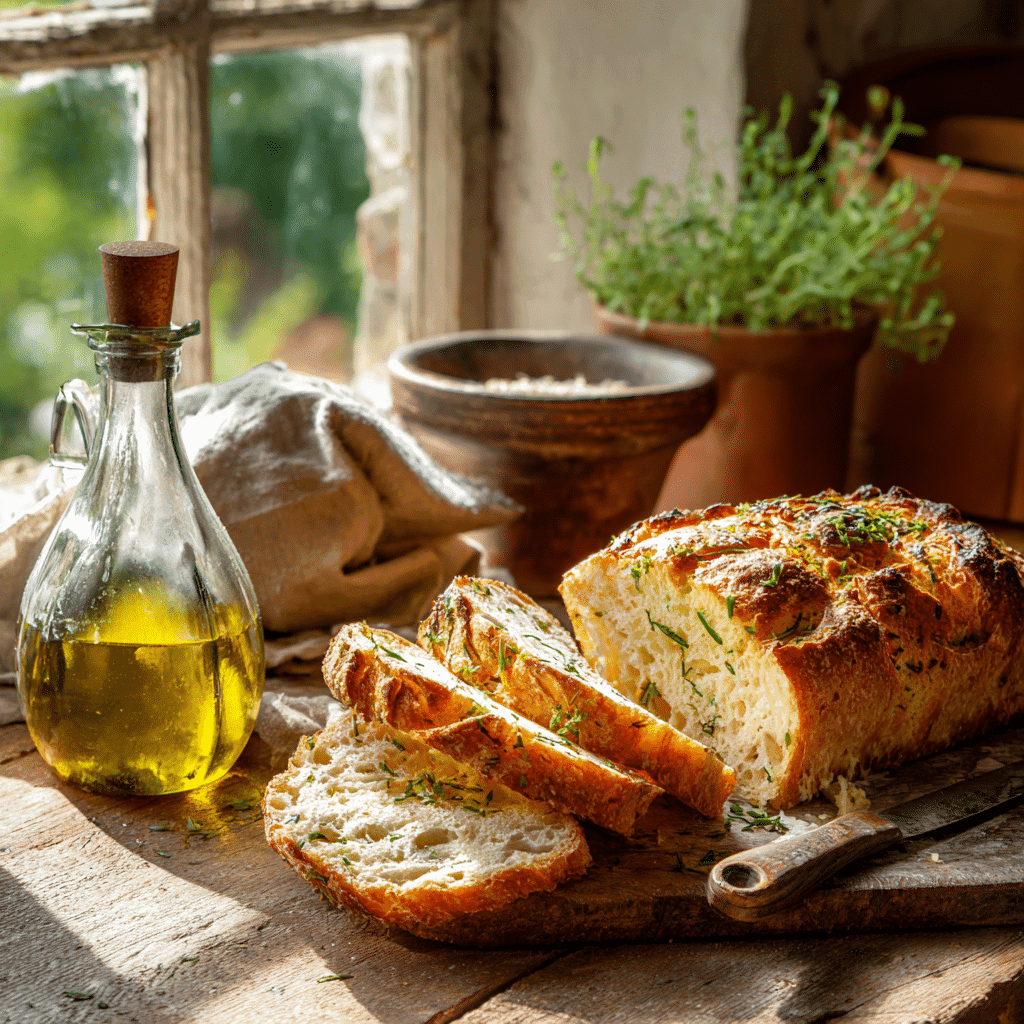
Are Leavening Agents Gluten Free?
In most cases, yes. Common leavening agents like baking soda, baking powder, and wild yeast (from sourdough starters) are naturally gluten-free. But if you’re baking levain bread gluten free, you need to read labels carefully. Some baking powders contain starches derived from wheat as anti-caking agents.
To be safe, look for products labeled “certified gluten-free.” For example, Bob’s Red Mill and Rumford both offer baking powders free from gluten and aluminum. Luckily, when making gluten-free levain, you don’t need baking powder or soda—your wild starter does all the work through natural fermentation.
This long, slow rise gives your bread more flavor and a better gut-friendly profile, especially when paired with naturally fermented foods or gluten-free meals like these high-protein vegan options.
Improving Texture and Rise Without Gluten
Here’s the truth: gluten is what gives bread its stretch and chew. Without it, your dough needs help holding shape and trapping gas bubbles. Instead of artificial binders, levain bread gluten free relies on technique and natural thickeners like psyllium husk, ground chia seeds, or flax meal.
Psyllium husk is the secret to a soft yet elastic crumb—it binds water and mimics gluten’s stretch. Start with 1 tablespoon per cup of flour and adjust based on your flour blend.
Another trick? Rest your dough. Autolyse (resting flour and water before mixing in starter and salt) improves hydration. And always give the bread time to ferment fully—it’s not just for flavor, it’s crucial for rise.
If you’re new to this method, our step-by-step sourdough recipe explains each part clearly. Pair your fresh loaf with dishes from our gluten-free cooking archive for a balanced, allergen-safe meal.
for mor recipes follow me in facebook and pinterest
5: Conclusion
Making levain bread gluten free isn’t just possible—it’s satisfying, delicious, and healthier for many. With the right gluten-free starter, a thoughtful blend of flours, and fermentation patience, you can bake rustic loaves with authentic sourdough flavor and crust. Whether you’re managing celiac disease or just want a better gluten-free bread option, levain is your answer. Pair it with real-food recipes like our gluten-free chicken nuggets or gluten-free desserts to build meals that feel comforting, complete, and 100% safe.
Let the fermentation begin!
What is Levain bread made of?
Levain bread is made with flour, water, salt, and a natural sourdough starter. In gluten-free versions, the flours are switched to options like brown rice, sorghum, or buckwheat. There are no commercial yeasts—just wild fermentation for a rich, tangy flavor and airy crumb.
What is the best bread for gluten intolerance?
The best bread for gluten intolerance is homemade or certified gluten free levain bread. It’s naturally leavened, easier to digest, and free from additives or binders that can upset sensitive stomachs. Long-fermented gluten-free sourdough is often better tolerated than most store-bought breads.
Is sourdough starter gluten-free?
Only if made with gluten-free flour. A traditional starter contains gluten, but you can create a gluten-free version using flours like brown rice or sorghum and water. After daily feeding, the starter becomes bubbly and active, perfect for baking levain bread gluten free.
Can celiacs eat gluten-free cookies?
Yes, but only when every ingredient is certified gluten-free and there’s no cross-contamination. Many store-bought gluten-free cookies are safe, but homemade ones give you full control over ingredients. Try options from our gluten-free dessert collection.
Are leavening agents gluten-free?
Most are, including baking soda, baking powder, and sourdough starters. Still, it’s essential to read labels. Some baking powders include wheat-based starch. If you’re baking for celiacs, always choose certified gluten-free leavening agents to stay safe.
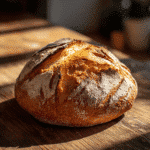
Levain Bread Gluten Free
- Total Time: 1 hour 10 minutes (plus fermentation time)
- Yield: 1 loaf
- Diet: Gluten Free
Description
Rustic, chewy, and naturally fermented—this gluten-free levain bread brings the soul of sourdough to a wheat-free kitchen. Perfect for celiacs and anyone wanting better bread without gluten.
Ingredients
- 1/2 cup gluten-free sourdough starter (active and bubbly)
- 1 cup brown rice flour
- 1 cup sorghum flour
- 1/2 cup millet flour
- 1/2 cup tapioca starch
- 1 tbsp psyllium husk
- 1 1/4 cups filtered water
- 1 1/4 tsp sea salt
Instructions
- In a large bowl, mix the gluten-free flours and psyllium husk.
- Add the starter and filtered water, and stir until combined into a thick, sticky dough.
- Let the dough rest for 30 minutes (autolyse).
- Add the salt and gently mix it into the dough.
- Perform 3-4 sets of stretch-and-folds over the next 2 hours at 30-minute intervals.
- Cover and let the dough ferment at room temperature for 8–12 hours, or until noticeably risen.
- Transfer dough to a parchment-lined loaf pan or proofing basket.
- Let proof another 1–2 hours.
- Preheat oven to 450°F (230°C) with a Dutch oven inside.
- Place dough in Dutch oven, cover, and bake for 30 minutes.
- Remove lid and bake another 15–20 minutes until golden and crusty.
- Cool completely before slicing.
Notes
Use only certified gluten-free ingredients to ensure safety for those with celiac. A digital scale and thermometer help achieve consistent results.
- Prep Time: 25 minutes
- Cook Time: 45 minutes
- Category: Bread
- Method: Baking
- Cuisine: Gluten-Free
